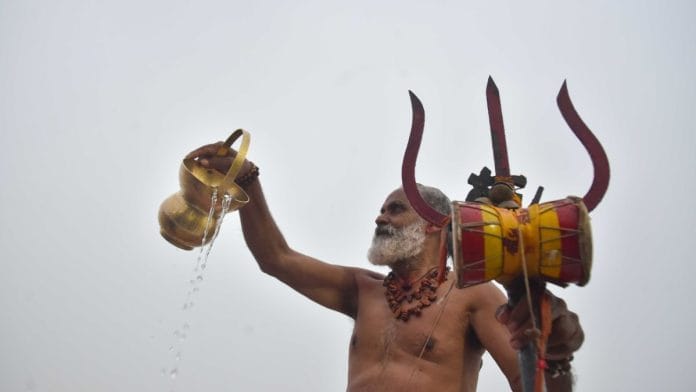Legend has it that when the Gods were under a curse that made them weak, Brahma the Creator advised them to retrieve the Amrit, the elixir of immortality, from the ocean. The Gods sought help of the Demons and together they churned the ocean to extract the Amrit. As Dhanwantari, the divine healer appeared carrying the Kumbh, the pot of Amrit, a battle ensued between the Gods and the Demons over its possession.
During this battle, drops of Amrit fell at four different places–Prayag (Allahabad), Haridwar, Nasik and Ujjain. Since then, the Kumbh Mela is held at each of these places in a twelve-year rotating cycle. The most important is the Maha Kumbh Mela, held every twelfth year, followed by the Ardh Kumbh Mela, held every six years.
The celebration at Prayag has come to acquire the most significance since it is held at the Sangam, the confluence of the holy rivers–the Ganga, the Yamuna and the mythical Saraswati. Hindus believe that bathing here during the Kumbh Mela washes away their sins and ends the cycle of rebirth and death.
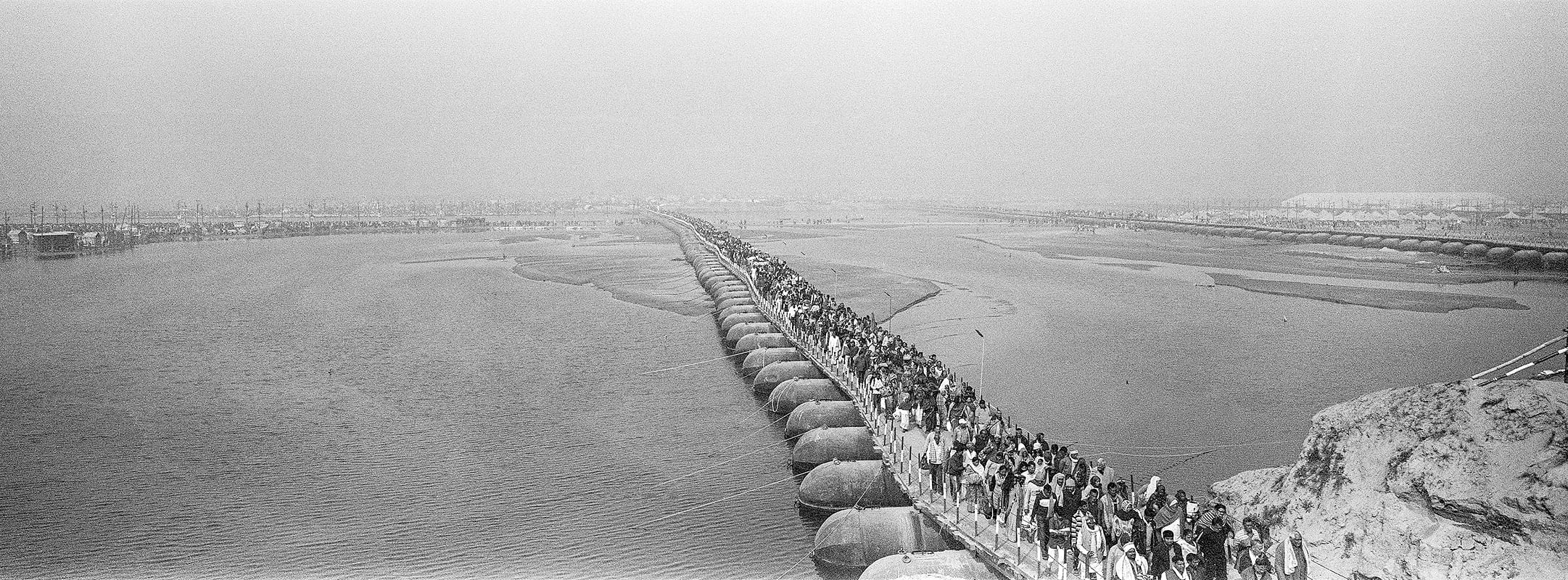
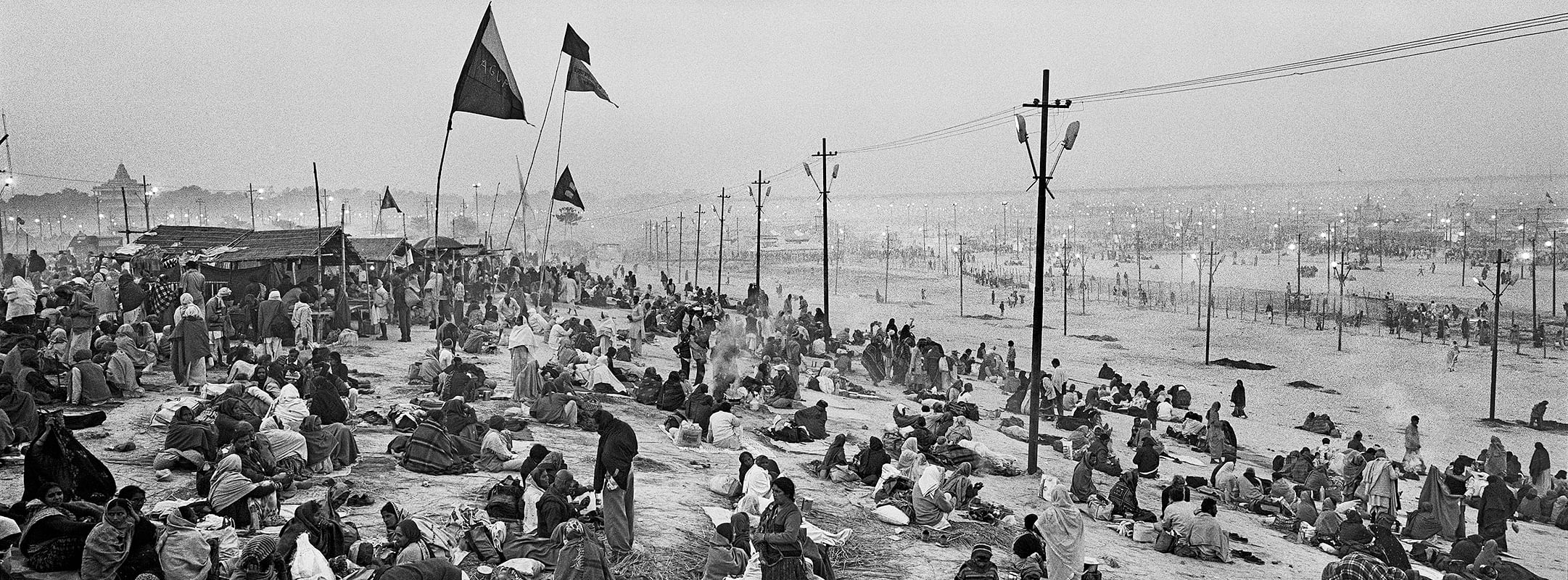

Greatest show on Earth
The first time I went to the Kumbh Mela was in 2001, while on assignment for Outlook magazine. Coming after 144 years and at the beginning of a new millennium, that Maha Kumbh at Allahabad, or Prayagraj as it is now called, was a highly anticipated one. The idea of an ancient almost primordial mega event in a ‘futuristic’ connected global world was extremely seductive. I came back from the festival with many images that lived up to the image of it being the ‘greatest show on the earth’. But being a non-believer, I was also confused by my attraction on a personal level for what was essentially a religious event. To seek an answer I have been going back to subsequent Kumbh Melas of 2007, 2013 and 2019 at Prayag–never on assignment, always photographing for myself, with no brief or expectation of outcomes.
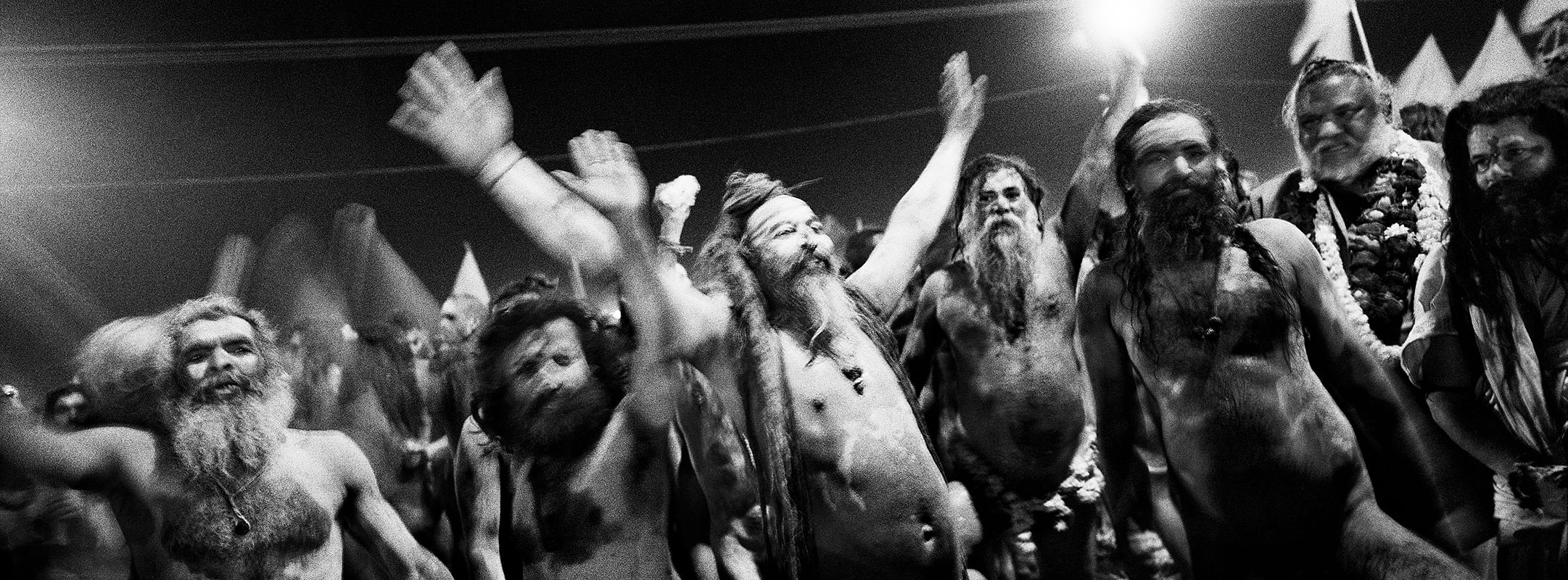
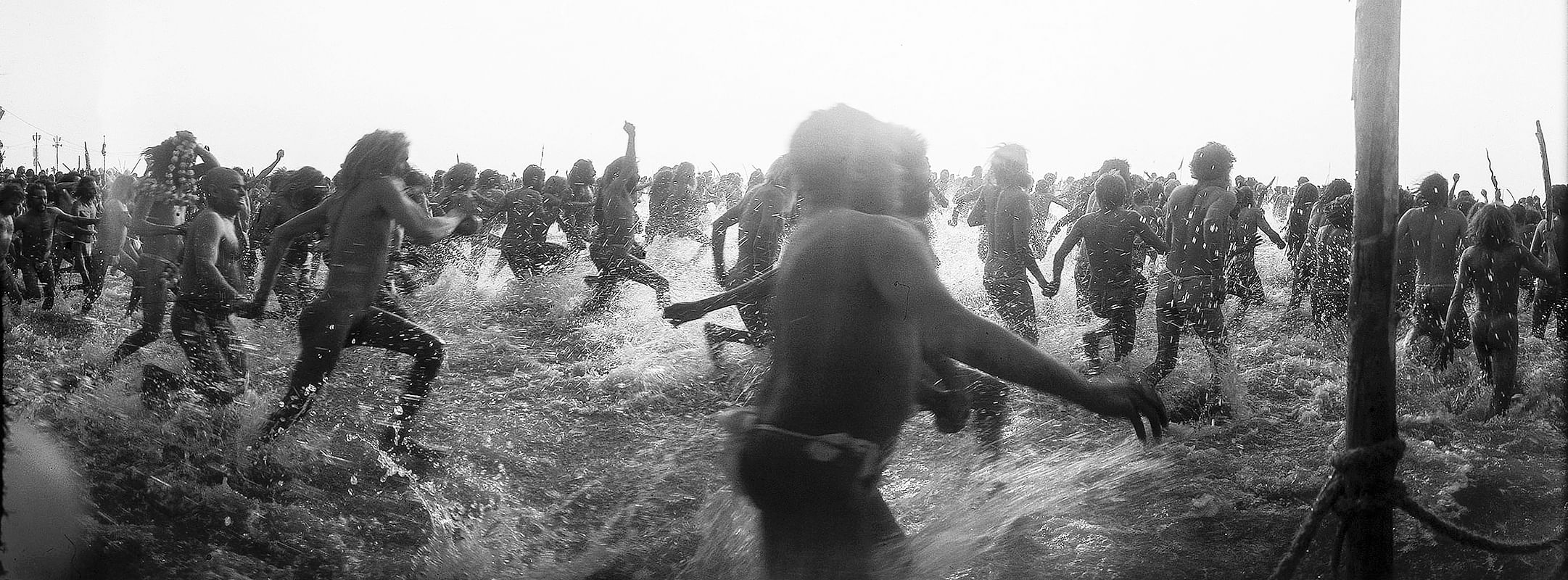
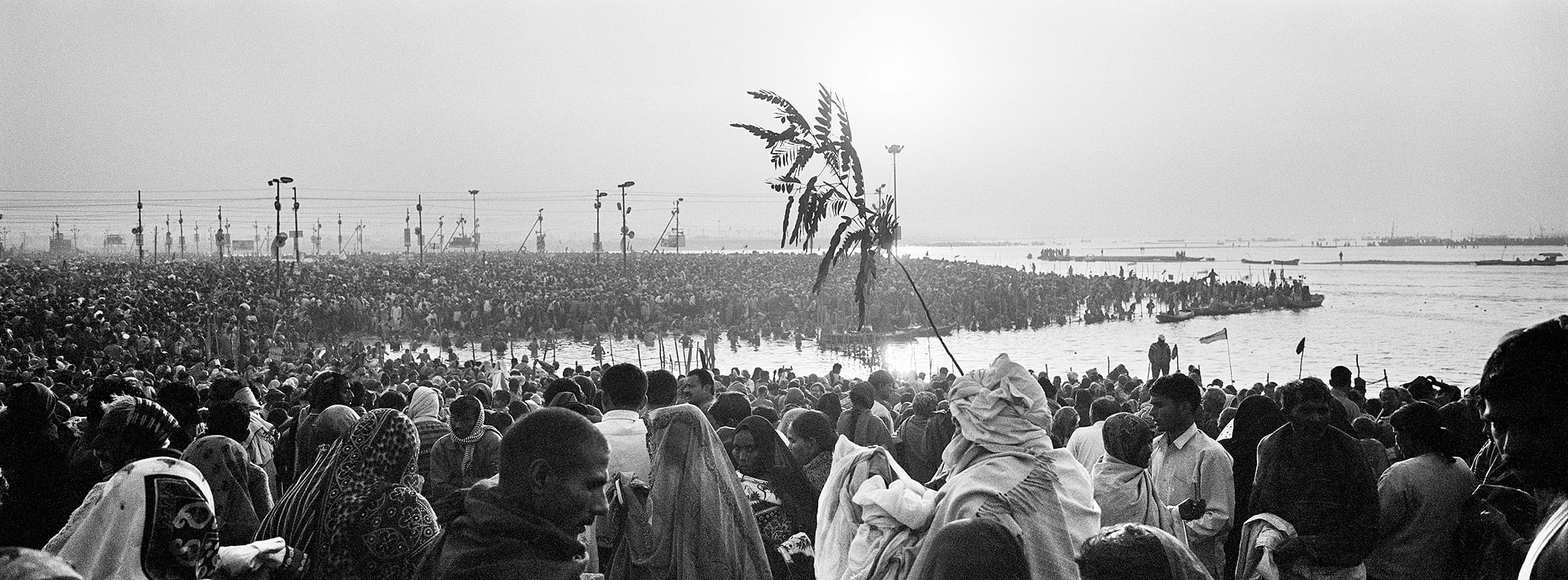
Also read: Maha Kumbh and India’s new-age sadhus—riding Bullets, making Reels
The Kumbh Mela is all about scale. It is a massive enterprise where on the most auspicious days millions of people converge to bathe in the holy waters of the Sangam. A tented city springs up on the banks of the river, a special administration is set up, a massive police force is deployed, extra trains and buses are run. Pilgrims, religious leaders, shopkeepers, merchants and wandering minstrels stream in from all directions. And then there are the Sadhus, Indian holy men, ascetics of all kinds.
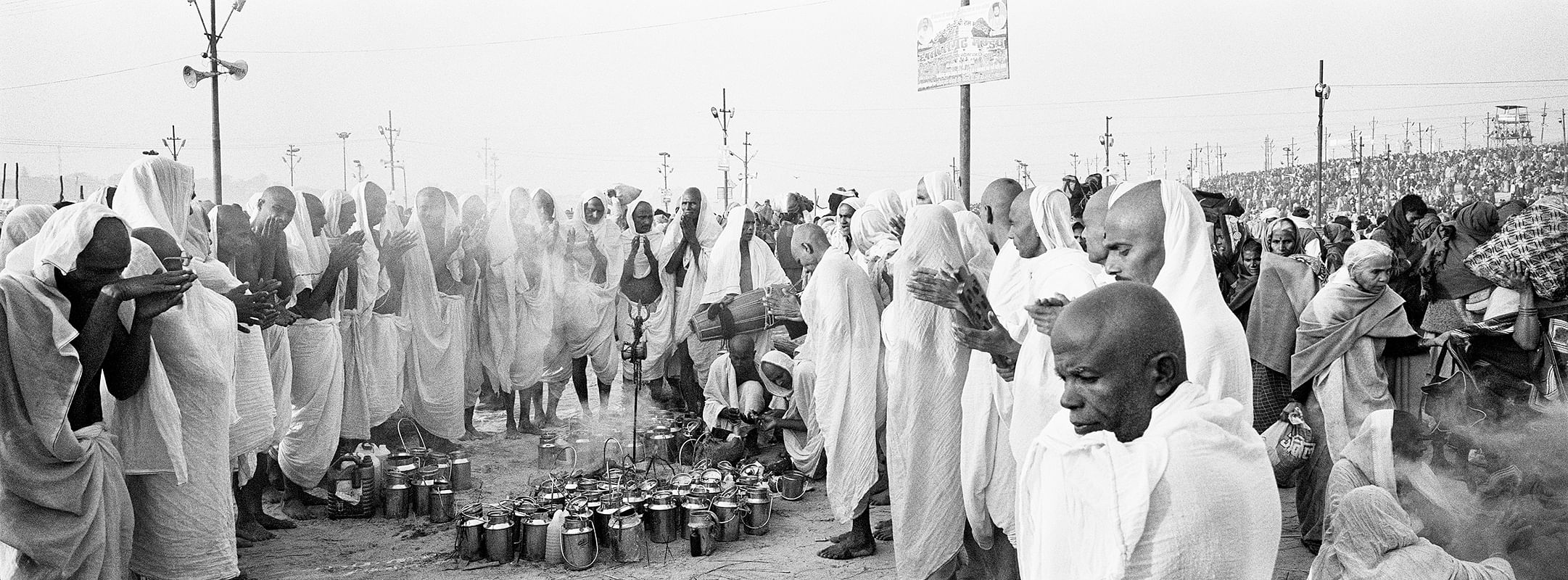
The rock stars of them all are the Naga Babas–stark naked, wild, irreverent, hashish smoking ascetics. They have become the centerpiece of the Kumbh, viewed with more awe than the religious leaders whose processions they grace. I saw Hijras, a third-gender community in India, singing songs for the naked Naga Sadhus in their camp, who in turn blessed the pilgrims milling around, while fellow travellers smoked hashish in an invocation to the god Shiva. A group of Kalpavasis, pilgrims who pledge to live and worship at the Kumbh for a month, freshly bathed in the river, heads shaved and draped in white, formed a tight circle in the crowd of millions, to pray and sing to their god. And if you listened carefully under the blaring loudspeakers, you would hear the sound of many different languages and dialects mingling in the air.
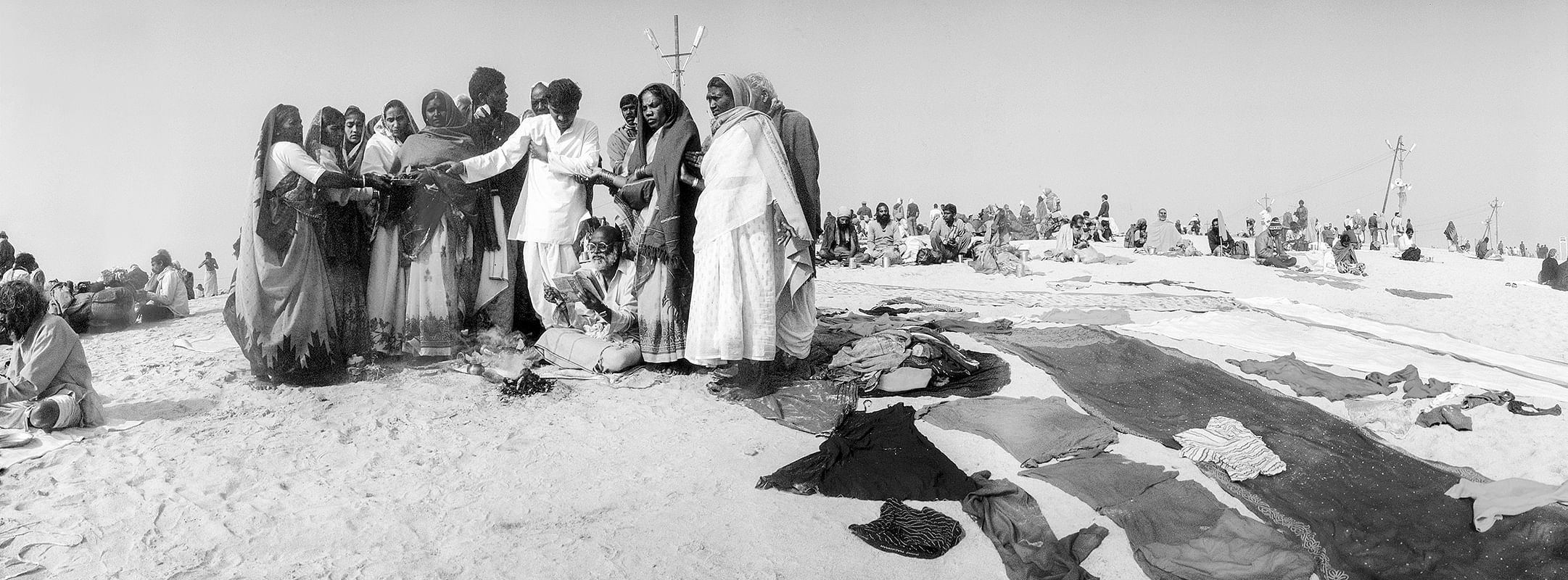
The majority of the pilgrims who come to the Kumbh Mela are rural poor people who walk miles, carrying their meager belongings on their heads and shoulders, crossing the pontoon bridges, clutching onto a family member’s shawl or sari to avoid getting separated and lost. They reach the riverbank, camp out in the bitter cold night, and cook their simple meals on cow-dung cake flames, prepared to bathe in the holy waters at the crack of dawn at the most auspicious moment. Observing them I learnt that for all its craziness, complexity and enormity, the Kumbh is actually about the simplicity of faith. On reaching the river, after navigating through the crush of millions, an ordinary pilgrim’s final prayer is deeply personal and very powerful. You do not have to be a Hindu, or even a Believer, to be moved by the beauty of this communion.
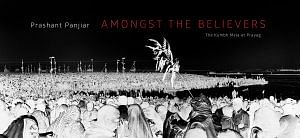 This excerpt from Prashant Panjiar’s ‘Amongst The Believers: The Kumbh Mela at Prayag’ has been published with the author’s permission. The book is available for purchase on Amazon bit.ly/3Uq45iT
This excerpt from Prashant Panjiar’s ‘Amongst The Believers: The Kumbh Mela at Prayag’ has been published with the author’s permission. The book is available for purchase on Amazon bit.ly/3Uq45iT



